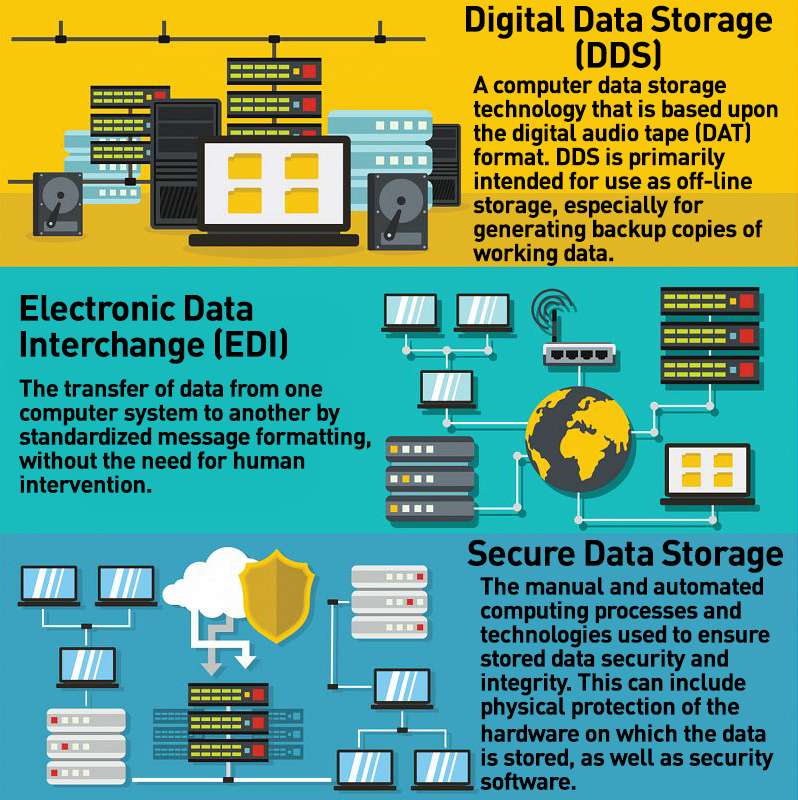How to Integrate Data Destruction Techniques into Your Cyber Security Strategy
How to Integrate Data Destruction Techniques into Your Cyber Security Strategy
Blog Article
The Crucial Nature of Data Devastation in Upholding Computer Security Solutions and Protecting Against Unauthorized Accessibility
In an era where information breaches and identity burglary are significantly widespread, the importance of efficient data damage can not be overemphasized. Organizations needs to recognize that the failure to appropriately deal with sensitive info postures not only lawful and monetary risks but likewise a possible erosion of client depend on. Various approaches, from data wiping to physical damage, work as crucial safeguards against unapproved accessibility. Understanding the implications of information destruction techniques and compliance with laws increases vital questions concerning the competence of existing strategies and their lasting practicality in the face of advancing dangers.
Importance of Data Devastation
In a significantly digital globe, the significance of information devastation can not be overstated. As organizations amass vast quantities of delicate details, the potential consequences of failing to properly handle and get rid of of that information come to be increasingly extreme. Data violations, identification theft, and corporate reconnaissance posture considerable hazards, underscoring the need of reliable data devastation practices.

Moreover, as innovation progresses, so also do the approaches through which destructive actors seek to make use of delicate information. Organizations has to remain aggressive and alert in their information destruction approaches to secure against these developing risks. By prioritizing information devastation, companies not just protect their possessions but additionally foster depend on among stakeholders and clients, demonstrating a commitment to accountable data administration and safety and security techniques.
Approaches of Effective Information Devastation
To make certain the irreversible and total destruction of sensitive data, companies can use a range of reliable techniques customized to their specific requirements. One of the most usual approaches is information wiping, which includes utilizing specialized software to overwrite existing data several times, making recuperation practically impossible. This is specifically useful for solid-state drives and hard drives, where typical removal approaches are poor.
An additional effective approach is degaussing, which utilizes strong magnetic fields to disrupt the magnetic domains on storage media, making the data irretrievable. This technique is particularly matched for magnetic storage space tools, such as tape drives and tough disks.
Physical devastation is additionally a viable option, involving the shredding, crushing, or incineration of storage tools. This method guarantees that data can not be recuperated, making it perfect for companies handling extremely delicate details.

Compliance With Information Security Laws
Organizations should not only focus on efficient information damage techniques however additional hints likewise make certain compliance with data defense regulations that govern how delicate details is managed and thrown away. Following these policies is essential for safeguarding personal information and maintaining customer trust fund. Laws such as the General Information Security Regulation (GDPR) in the European Union and the Wellness Insurance Portability and Responsibility Act (HIPAA) in the United States impose strict guidelines on data administration, that include needs for the secure disposal of sensitive details.
To achieve conformity, companies need to carry out thorough information destruction plans that line up with these lawful frameworks. This includes determining information that requires damage, establishing procedures for safe methodsâEUR" such as shredding physical media or making use of software that fulfills sector criteria for information wipingâEUR" and keeping detailed records of damage activities. Regular audits should be conducted to ensure adherence to these policies and to identify any type of possible locations for enhancement.
Failure to comply with data security laws can result in substantial legal implications, consisting of large penalties and damages to an organization's track record. Therefore, integrating compliance right into data devastation practices is not only a lawful responsibility yet also an important component of a durable details security method.
Effects of Poor Data Handling
Poor data handling can bring about extreme consequences that prolong past immediate functional setbacks. Organizations might face significant economic losses because of data breaches, which usually cause expensive remediation efforts, lawful fees, and governing penalties. These financial ramifications can stress sources and prevent development, eventually impacting a company's profits.
Furthermore, bad data handling can drastically harm an organization's credibility. Partners, stakeholders, and consumers might shed rely on an entity that fails to secure delicate info, causing reduced client loyalty and prospective loss of company opportunities. This erosion of count on can take years to reconstruct, if it can be recovered at all.
Additionally, organizations can face lawful implications occurring from non-compliance with data security regulations. Such infractions might cause investigations and charges, find more info compounding the monetary problem and additional staining the company's picture.
In the realm of cybersecurity, insufficient information monitoring techniques can create vulnerabilities that make systems much more at risk to unapproved gain access to and cyberattacks. Eventually, these effects emphasize the crucial relevance of implementing durable information taking care of treatments to guard delicate information and preserve organizational honesty.
Finest Practices for Secure Data Disposal


To start with, data must be categorized according to its level of sensitivity. Delicate details requires much more strenuous disposal approaches, such as shredding physical documents and utilizing sophisticated software program for digital data wiping. Using certified data destruction services makes sure conformity with industry policies and requirements.
Second of all, companies should carry out an information disposal policy that mandates regular audits. This policy should outline the treatments for data retention and destruction, making certain that obsolete data is taken care of without delay and firmly. Training employees on these protocols is crucial to fostering a society of safety and security recognition.
Last but not least, maintaining in-depth documents of disposed data enhances responsibility and supplies a clear audit path. This paperwork must consist of the sort of data destroyed, the approach used, and the day of disposal.
Verdict
Adopting durable techniques such as information cleaning, degaussing, and physical destruction, along with conformity with guidelines like GDPR and HIPAA, is crucial for securing delicate information. Disregarding proper information disposal methods can lead to serious go to this site repercussions, including information violations and legal effects.
In an age where information breaches and identification burglary are increasingly common, the significance of efficient information damage can not be overstated. data destruction. Information violations, identification theft, and company espionage position considerable hazards, underscoring the necessity of efficient information devastation techniques
Conformity with laws such as GDPR and HIPAA mandates that organizations implement strict information security actions, consisting of the safe and secure destruction of data at the end of its lifecycle.
By prioritizing data devastation, business not just safeguard their assets yet likewise foster trust among customers and stakeholders, demonstrating a dedication to accountable data management and safety techniques.
Organizations have to not just concentrate on effective information devastation approaches but additionally make sure conformity with information protection policies that regulate just how sensitive details is dealt with and disposed of.
Report this page